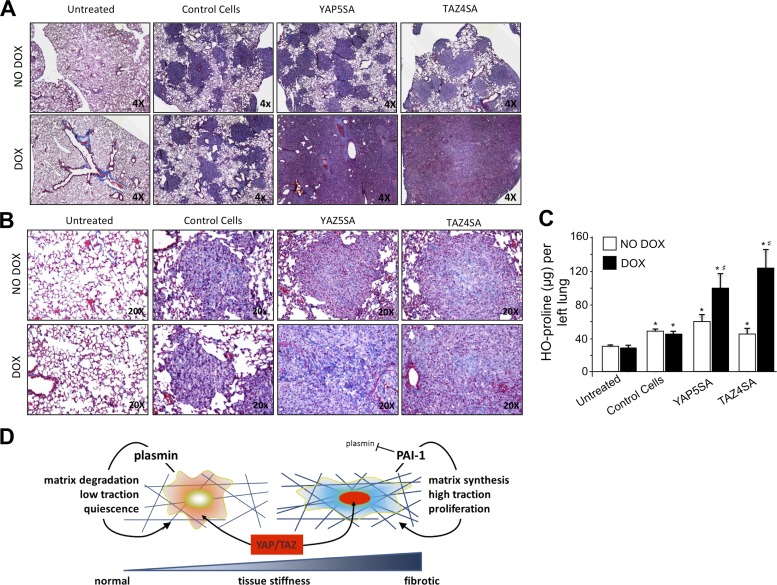Fig. 8.
Conditional overexpression of YAP5SA or TAZ4SA confers fibrogenic potential to fibroblasts adoptively transferred to mouse lung. A: adoptive transfer of control 3T3 fibroblasts or 3T3 fibroblasts expressing doxycycline-inducible YAP5SA or TAZ4SA to immunocompromised mice results in cellular nodule formation in the lungs evident under low magnification in Masson's trichrome-stained tissue sections. Feeding with doxycycline dramatically increases nodular lung fraction in mice with YAP5SA- or TAZ4SA-expressing cells. B: higher magnification images from Masson's trichrome-stained sections demonstrate collagen deposition in nodules from doxycycline-fed mice with YAP5SA- or TAZ4SA-expressing cells. C: robust increases in lung hydroxyproline were observed in doxycycline-fed mice with YAP5SA- or TAZ4SA-expressing cells relative to no doxycycline feeding and relative to doxycycline-fed mice with control 3T3 cells, demonstrating the fibrogenic capacity of adoptively transferred cells expressing YAP5SA or TAZ4SA. *P < 0.05 relative to Untreated, #P < 0.05 between No Dox and Dox within same group. D: schematic illustrates key findings of this work: increasing matrix stiffness promotes nuclear YAP/TAZ localization, shifting fibroblasts from a relatively quiescent state to a more activated fibrogenic and matrix-remodeling state, supported in part by upregulation of PAI-1 and attenuation of pericellular plasmin activity.

